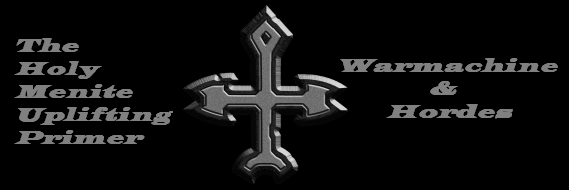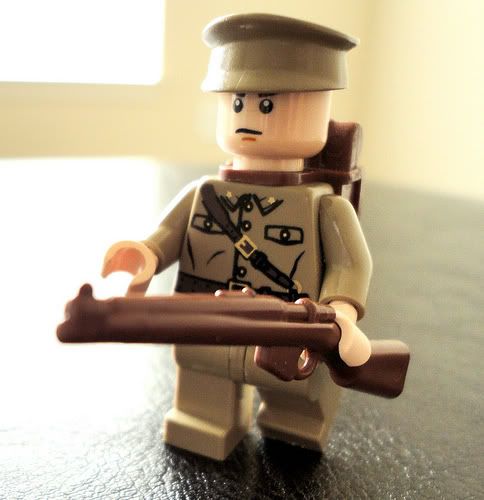 Flattening the Curve: Basic Wave Theory
Flattening the Curve: Basic Wave Theory
Warmahordes enthusiasts have always mantained that their game has a relatively simple ruleset, on par with 40k and in this, they are correct. However, a beginner may still take time to grasp the important of a tuned force.
My own learning curve was a steep one. The tendency to drive forward in a shallow and wide battleline failed me time and again. The tipping point was the realisation that Warmahordes required greater depth in formation and the use of layering. Once I'd identified the basic idea laid out below, I found my lists and game performance improving enormously.
The main difficulty is that while many sites detail the most competitive caster and strongest units, these can only do so much, the key to success for a beginner is in understanding your force must have two (occasionally) three core elements to be successful. Once these have been identified, then you can design your force with some expectation of success. The compulsary elements are the First Wave and the Second Wave. Flankers are the optional element.

The First WaveAllowing your opponent to operate without restrictions is the path to defeat. Always assume that he, undoubtedly, has the perfect plan. Your first action should be to lodge a rusty spanner deep in the workings of his well-oiled machine. Your tool of choice is the First Wave.
The First Wave should be considered a sacrifical force. They are not expected to survive the game intact but shape the battlefield to benefit those units following behind.
The stereotypical First Wave unit is the humble "tarpit" unit. Whether through high armour, high defence, special rules or sheer numbers, these are intended to move forward and lock enemy assets in place. They are not expected to inflict losses, merely to tie down more than their value. A fully upgraded unit of the Protectorate's Holy Zealots are an obvious choice with their ability to gain one turn of near-total immunity to enemy attacks.
A rarer First Wave archetype is the "Board Control" unit. Similar to the "Tarpit", the goal is to advance and shape the enemy's movement to better suit your army. The Circle's Druids can lay down clouds which restrict shooting and charging. This may seem like a passive response but it has the same effect as the above.
The distinction is somewhat arbitary and there are many many options. But you should begin to grasp the idea. First Wave units which limit the enemy's ability to move as he wishes, costing him irreplacable time and space. If you don't have this element, then your opponent has the ability to ensure optimal positioning for his force while his First Wave denies you the freedom to react.
Your first strike units seem to be an obvious choice for this category. As very fast models, they can attack from great distances and remove key enemy pieces. In theory. In actuality, they are often better reserved as a second wave unit. Any good opponent will not expose his key units to your first strike and flinging them into the opposing First Wave plays into his hands.
So, look to your faction books and identify those relatively cheap and/or survivable units which can used as your First Wave. Anything which can truly delay an enemy advance should catch your attention. The game is fast-paced, any delays you inflict can prove fatal. This is especially true in tournament play.
The Second Wave
This is the heart of your force. The most effective assets and support elements. This vary from the actual second line units standing behind your frontline to the support units cowering in the rear of your force. Most importantly, it includes your caster. So, basically, everything else. But calling it that would ruin my lovely First/Second Wave dicotomy.
The First Wave is sacrificed to allow this wave to be used to full effect. Everything the First Wave does must be viewed through the lense of benefiting the Second Wave. Victory or defeat will be decided by whomever makes best use of this element.
The composition of your Second Wave varies wildly, depending on your faction choice. Bear in mind the relative value of your assets. The Second Wave should have all of your strongest pieces. Your best non-ranged jack, your best ranged unit, your strongest support. Critically, you wish to protect whichever units are needed to make your evil masterplan work.

The Flankers
Not all forces use flankers and some like the Legion of Everblight tend to rely heavily on their use. Hence, their use is optional but strongly recommended.
Their intentions are clear. They wish to move to a threatening position alongside or behind the opposing force. They hope to draw enemy assets away from the frontline to face them or simply bypass the frontline to strike at the enemy's Second Wave.
The main requirement of a flanking unit is speed. Tournament games rarely go beyond the fourth turn and can often end in an assassination on the second turn. Flankers must be able to reach their angle of attack by the second turn.
The second requirement is that they must pose a credible threat. A flanking unit which is unthreatening will not provoke the desired response. You want to draw a disproportionate slice of the enemy force towards the flanker or failing that, choose a flanking unit that will be able to inflict enough damage to justify the unit's cost.
Overall
The use of the terms First Wave and Second Wave may give the impression that Warmahordes tactics boil down to a staggered charge at the enemy but the same could be said of chess. The comparison is a fair one as Warmahordes has a strong sacrifical element. You commit assets to eliminate enemy assets in the hopes of attriting the enemy to death or establishing the conditions for a decapitating strike against the enemy caster.
The most important thing for the new player to grasp is that the notion of layered attack and defence is key to success. Although, the new player will soon outgrow the approach, the basic division of First/Second Wave should provide a good starting point to effective play.Labels: Army Design, Newbreed, Tactics, Wargames, Warmahordes
 Flattening the Curve: Basic Wave Theory
Flattening the Curve: Basic Wave Theory
